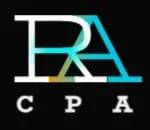🌟 Personalized Solutions for Your Unique Business Challenges! 🔍
Are you struggling to juggle multiple roles, keep your cash flow steady, and stay ahead of the competition? You're not alone! From scaling your business 📈 to mastering digital marketing 💻, and from managing your time ⏰ to finding the right tools 🛠️, one-person business owners face unique challenges every day.
Join my exclusive monthly webinar and discover practical solutions to tackle these issues head-on!

🌟 This is Your Webinar! 🌟
Sophie, the owner of “Sweet Delights Bakery,” was facing a challenging time. Despite her passion for baking and a loyal customer base, the bakery’s finances were in disarray. Sophie struggled to determine whether her business was truly profitable or if it was slowly sinking into debt. She felt a deep sense of responsibility to her employees and customers, but the constant financial uncertainty left her feeling anxious and overwhelmed.
Agitate: As Sophie reviewed her expenses and revenues, she felt the sting of frustration and fear. The bakery’s bills were piling up, and despite the steady stream of customers, it seemed like there was never enough money to cover all the costs. Sophie was worried about making the wrong decisions, such as pricing her products too low or not understanding the true cost of her operations. The lack of clear financial insight made her fear the possibility of having to close her beloved bakery, disappointing her loyal customers and letting down her dedicated staff.
Solution: During a small business seminar, Sophie was introduced to the concept of break-even analysis. The seminar explained that break-even analysis helps businesses determine the point at which total revenues equal total costs, meaning the business is neither making a profit nor a loss. Understanding this point provides crucial insights into pricing, cost control, and profitability. Realizing the importance of this tool, Sophie decided to apply break-even analysis to her bakery.
By calculating the break-even point, Sophie was able to gain a clear understanding of the minimum sales needed to cover her costs. This newfound clarity allowed her to make informed decisions about pricing her baked goods, managing expenses, and planning for growth. The structured approach of break-even analysis provided Sophie with the confidence and control she needed to steer her bakery towards profitability. With a renewed sense of direction, Sophie felt hopeful and empowered, knowing she had the tools to ensure the success of Sweet Delights Bakery.
What is Break-Even Analysis?
Break-even analysis is a financial calculation that helps determine the point at which total revenues equal total costs, meaning the business is neither making a profit nor a loss. Key components of break-even analysis include:
Fixed Costs: Costs that remain constant regardless of the level of production or sales. Variable Costs: Costs that vary directly with the level of production or sales. Revenue: The income generated from the sale of goods or services.
Why is it Important?
Profitability Insight: Provides a clear understanding of the minimum sales needed to cover costs and achieve profitability.
Pricing Decisions: Aids in setting prices by identifying the impact of different pricing strategies on profitability.
Cost Management: Helps in managing and controlling costs by understanding their impact on the break-even point.
Financial Planning: Supports financial planning and decision-making by providing insights into the financial health of the business.
Risk Reduction: Reduces financial risk by identifying the sales volume needed to avoid losses.
Goal Setting: Assists in setting realistic sales and revenue targets to achieve financial stability and growth.
✨ Steps to prepare prepare a simple break-even analysis:
✨
Step 1: Understand the Basics of Break-Even Analysis
Definition: Break-even analysis helps determine the point at which total revenues equal total costs, meaning there is no profit or loss. Purpose: To identify the number of units that need to be sold to cover costs.
Step 2: Identify Fixed Costs
List All Fixed Costs: These are costs that do not change with the level of production or sales. Examples include rent, salaries, insurance, and utilities. Calculate Total Fixed Costs: Sum all identified fixed costs.
Step 3: Identify Variable Costs
List All Variable Costs: These are costs that vary directly with the level of production or sales. Examples include raw materials, direct labor, and sales commissions. Calculate Variable Cost Per Unit: Sum all variable costs for one unit of product or service.
Step 4: Determine the Selling Price Per Unit
Set or Identify Selling Price: This is the price at which each unit of the product or service will be sold.
Step 5: Calculate Contribution Margin Per Unit
Formula: Contribution Margin Per Unit = Selling Price Per Unit - Variable Cost Per Unit
Step 6: Calculate Break-Even Point in Units
Formula: Break-Even Point (Units) = Total Fixed Costs / Contribution Margin Per Unit
Step 7: Calculate Break-Even Point in Sales Dollars
Formula: Break-Even Point (Sales Dollars) = Break-Even Point (Units) * Selling Price Per Unit
Step 8: Validate and Analyze Results
Check for Accuracy: Ensure all calculations are accurate. Analyze: Understand what the break-even point means for your business. Assess if the break-even point is achievable and consider strategies to lower it if necessary.
Step 9: Create a Break-Even Chart (Optional)
Plot Costs and Revenues: Plot fixed costs, total costs (fixed + variable), and total revenue on a graph. Identify Break-Even Point: The point where the total cost line intersects the total revenue line is the break-even point.
Step 10: Review and Adjust Periodically
Regular Review: Revisit your break-even analysis periodically to account for changes in costs, prices, and market conditions. Adjust: Make necessary adjustments to your costs, pricing strategy, or sales targets based on the updated analysis.
Share Your Three Key Challenges and Sign up Today
🌟 "Your journey as a one-person business owner is filled with unique challenges and incredible opportunities. Imagine a space where your specific struggles are not only acknowledged but transformed into stepping stones for success. This isn’t just any webinar – it’s your webinar, crafted with your needs in mind. Whether it’s mastering time management, ensuring a steady cash flow, or unlocking the secrets of digital marketing, this is your chance to receive expert, personalized guidance. Your dreams of growing your business and reaching new heights are within your grasp. Together, we will turn your obstacles into opportunities and your aspirations into achievements. This is your moment, your journey, and your time to shine. Let’s make your business dreams a reality, one step at a time." 🌟
About Your Webinar Host
Rokon Alam, CPA, MBA
ROKON ALAM, a distinguished professional with a relentless passion for helping small business owners stands before you. With an unwavering commitment to your growth and armed with an illustrious educational background, ROKON possesses the perfect blend of knowledge and experience to lead you to new heights.
With the distinguished titles of Chartered Professional Accountant (CPA), Fellow of the Association of Chartered Certified Accountants (FCCA), and a coveted Master of Business Administration (MBA) degree, Rokon has spent over two decades immersed in the corporate world. A senior management executive in Fortune 500 companies, Rokon has gained invaluable insights and honed expertise in a multitude of areas.
From finance to accounting, corporate tax to personal tax, investment management to personal finance, Rokon's proficiency spans across a vast spectrum of domains. He possesses a deep-rooted understanding of strategic business planning, ensuring that your dreams are transformed into a robust roadmap for success.
Moreover, Rokon's 's prowess extends to the ever-evolving realm of digital marketing, empowering you to harness the immense potential of the digital landscape.

